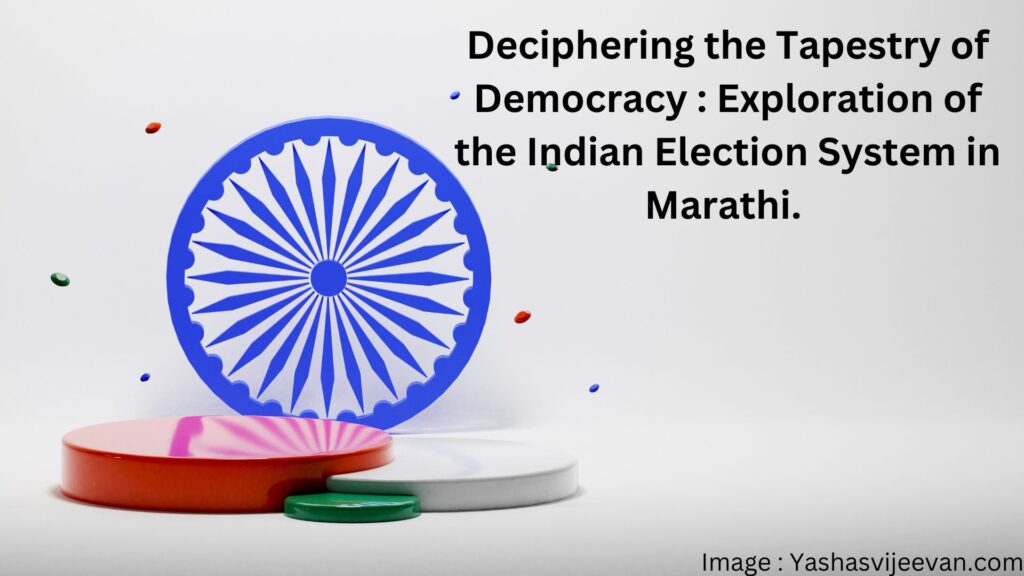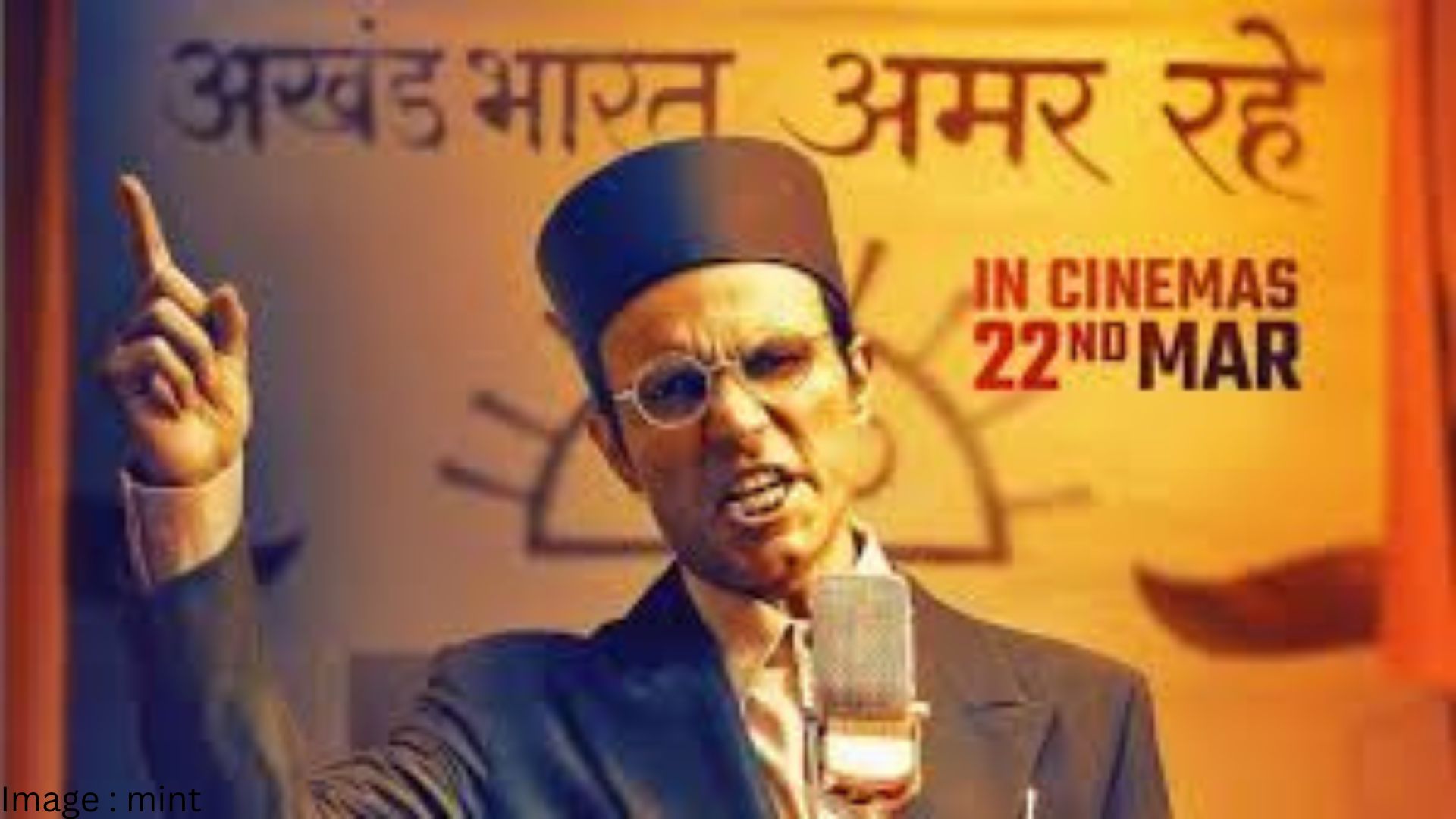
Exploration of the Indian Election System in Marathi | भारतीय निवडणूक प्रणाली
लोकशाहीची टेपेस्ट्री उलगडणे: भारतीय निवडणूक प्रणालीचे सखोल अन्वेषण
वर्णन: या 2500 शब्दांच्या ब्लॉगमध्ये भारतीय निवडणूक प्रणालीद्वारे सर्वसमावेशक प्रवास सुरू करा. त्याच्या घटनात्मक पायापासून ते राजकीय पक्षांच्या गुंतागुंतीपर्यंत, मतदार लोकसंख्याशास्त्र, निवडणूक प्रक्रिया आणि तांत्रिक प्रगती, जगातील सर्वात मोठ्या लोकशाही अभ्यासांपैकी एकाचा सखोल अभ्यास करा. भारतीय लोकशाहीतील आव्हाने, सुधारणा आणि विकसित होत असलेल्या लँडस्केपबद्दल अंतर्दृष्टी मिळवा.
प्रस्तावना: भारतीय लोकशाहीची नाडी
भारतीय निवडणूक प्रणाली ही जगातील सर्वात मोठ्या लोकशाहीच्या चैतन्यशीलतेचा आणि जटिलतेचा पुरावा आहे. भारताच्या राज्यघटनेत समाविष्ट केलेले, ते एक अब्जाहून अधिक नागरिकांसाठी निवडणूक प्रक्रियेचे आयोजन करते, जे राष्ट्राची विविध टेपेस्ट्री प्रतिबिंबित करते. या ब्लॉगचा उद्देश या गुंतागुंतीच्या व्यवस्थेच्या घटनात्मक पायापासून ते समकालीन आव्हाने आणि सुधारणांपर्यंतचे स्तर उलगडणे आहे.
घटनात्मक चौकट: लोकशाही शासनाचे स्तंभ
भारतीय निवडणूक व्यवस्थेच्या केंद्रस्थानी ही घटनात्मक चौकट आहे जी लोकशाही शासनाचा पाया घालते. डॉ. बी.आर.सह राष्ट्राच्या संस्थापकांनी केलेली कल्पना. आंबेडकर, संविधान सार्वत्रिक मताधिकाराची हमी देते, 18 वर्षांपेक्षा जास्त वयाच्या प्रत्येक नागरिकाला मतदानाचा अधिकार प्रदान करते. हे मूलभूत तत्त्व भारताच्या निवडणूक लोकशाहीचा आधारशिला बनवते, ज्यामुळे राजकीय प्रक्रियेत विविध आवाजांचा सहभाग सुनिश्चित होतो.
राजकीय पक्ष: लोकशाहीची इंजिने
निवडणुकीच्या लँडस्केपच्या मध्यभागी असंख्य राजकीय पक्ष आहेत जे सत्ता आणि प्रभावासाठी लढतात. भारतीय राष्ट्रीय काँग्रेस (INC) आणि भारतीय जनता पक्ष (BJP) सारख्या राष्ट्रीय दिग्गजांपासून ते तृणमूल काँग्रेस आणि द्रविड मुनेत्र कळघम (DMK) सारख्या प्रादेशिक खेळाडूंपर्यंत, हे पक्ष विचारधारा आणि हितसंबंधांचे प्रतिनिधित्व करतात. युतीच्या राजकारणाची गतिशीलता पक्षीय आघाड्यांचे आणि वाटाघाटींचे महत्त्व वाढवते, राष्ट्रीय आणि राज्य या दोन्ही स्तरांवर राज्यकारभाराची रूपरेषा तयार करते.
मतदार लोकसंख्याशास्त्र: विविधता आणि गतिशीलता
भारताची लोकसंख्याशास्त्रीय विविधता हे त्याच्या निवडणूक लँडस्केपचे एक निश्चित वैशिष्ट्य आहे, जे राजकीय परिणाम आणि धोरणांवर प्रभाव टाकते. 2,000 हून अधिक मान्यताप्राप्त वांशिक गट, 1,600 हून अधिक भाषा आणि अनेक धर्म आणि जातींसह, भारतीय मतदार हा ओळख आणि आकांक्षांचा एक मोज़ेक आहे. मतदारांच्या लोकसंख्याशास्त्रातील गुंतागुंत समजून घेणे राजकीय पक्षांना प्रभावी निवडणूक मोहिमा आणि लोकसंख्येच्या विविध विभागांशी प्रतिध्वनी करणारी धोरणे तयार करण्यासाठी आवश्यक आहे.
निवडणूक प्रक्रिया: नामांकनापासून निकालापर्यंत
भारतातील निवडणुकांचे आयोजन ही भारतीय निवडणूक आयोग (ECI) द्वारे देखरेख केलेली एक काळजीपूर्वक आयोजित प्रक्रिया आहे. यात उमेदवारांचे नामांकन दाखल करणे, प्रचार करणे, मतदान करणे आणि मतांची मोजणी यासह अनेक टप्प्यांचा समावेश होतो. इलेक्ट्रॉनिक मतदान यंत्राच्या (ईव्हीएम) वापरामुळे मतदान प्रक्रिया सुव्यवस्थित झाली आहे, कार्यक्षमता वाढली आहे आणि निवडणूक फसवणूक होण्याची शक्यता कमी झाली आहे. तथापि, सतत सुधारणा आणि दक्षतेची गरज अधोरेखित करून मतदारांना धमकावणे, निवडणूक हिंसाचार आणि रसदविषयक समस्या यासारखी आव्हाने कायम आहेत.
तांत्रिक प्रगती: निवडणूक लँडस्केपचे आधुनिकीकरण
अलिकडच्या वर्षांत, भारताने निवडणूक तंत्रज्ञानामध्ये महत्त्वपूर्ण प्रगती पाहिली आहे, ज्याचा उद्देश निवडणूक प्रक्रियेची अखंडता आणि पारदर्शकता सुधारणे आहे. EVM चा व्यापक अवलंब केल्यामुळे मानवी चुका आणि फेरफार कमी करून, जलद आणि अधिक अचूक मत मोजणीची सोय झाली आहे. याव्यतिरिक्त, राष्ट्रीय मतदार सेवा पोर्टल (NVSP) आणि मतदार ओळखपत्र नोंदणी यासारख्या उपक्रमांनी मतदार नोंदणी आणि प्रमाणीकरण सुलभ केले आहे, ज्यामुळे अधिक समावेशकता आणि सुलभता सुनिश्चित होते.
आव्हाने आणि सुधारणा: पुढील मार्गावर नेव्हिगेट करणे
तिच्या उपलब्धी असूनही, भारतीय निवडणूक प्रणालीला अनेक आव्हानांचा सामना करावा लागतो ज्यात लक्ष आणि सुधारणा आवश्यक आहेत. पैशाची ताकद, निवडणूक गैरव्यवहार आणि गुन्हेगारी घटकांचा प्रभाव यासारख्या समस्यांमुळे निवडणूक प्रक्रियेची अखंडता कमी होत आहे. शिवाय, राजकारणातील पैशाची भूमिका, निवडणुकीतील पारदर्शकता आणि उपेक्षित समुदायांचे प्रतिनिधित्व यासंबंधीच्या चिंता भारताच्या लोकशाही संस्थांना बळकट करण्यासाठी पद्धतशीर सुधारणांची गरज अधोरेखित करतात.
निष्कर्ष: अधिक समावेशक लोकशाहीच्या दिशेने
भारत एक दोलायमान लोकशाही म्हणून आपला प्रवास सुरू ठेवत असताना, त्याच्या निवडणूक प्रणालीची उत्क्रांती ही एक सतत प्रक्रिया राहिली आहे. त्याच्या घटनात्मक पायापासून ते समकालीन आव्हाने आणि सुधारणांपर्यंत, भारतीय निवडणूक प्रणाली विविध राष्ट्राच्या आकांक्षा आणि गुंतागुंत प्रतिबिंबित करते. अंतर्निहित आव्हानांना संबोधित करून आणि प्रगतीशील सुधारणांचा स्वीकार करून, भारत समता, न्याय आणि बहुलवाद या तत्त्वांचे समर्थन करणाऱ्या अधिक समावेशक आणि प्रातिनिधिक लोकशाहीचे पालनपोषण करू शकतो.
English : Deciphering the Tapestry of Democracy: An In-depth Exploration of the Indian Election System
Description: Embark on a comprehensive journey through the Indian election system in this 2500-word blog. From its constitutional foundations to the intricacies of political parties, voter demographics, electoral procedures, and technological advancements, delve deep into one of the world’s largest democratic exercises. Gain insights into the challenges, reforms, and the evolving landscape of Indian democracy.
Indian Election System Introduction: The Pulse of Indian Democracy
The Indian election system stands as a testament to the vibrancy and complexity of the world’s largest democracy. Enshrined in the Constitution of India, it orchestrates the electoral process for over a billion citizens, reflecting the diverse tapestry of the nation. This blog aims to unravel the layers of this intricate system, from its constitutional foundations to contemporary challenges and reforms.
Constitutional Framework: Pillars of Democratic Governance
At the heart of the Indian election system lies the constitutional framework that lays the groundwork for democratic governance. Envisioned by the founding fathers of the nation, including Dr. B.R. Ambedkar, the Constitution guarantees universal suffrage, affirming the right of every citizen above the age of 18 to vote. This fundamental principle forms the cornerstone of India’s electoral democracy, ensuring the participation of diverse voices in the political process.
Political Parties: Engines of Democracy
Central to the electoral landscape are the myriad political parties that vie for power and influence. From national giants like the Indian National Congress (INC) and the Bharatiya Janata Party (BJP) to regional players such as the Trinamool Congress and the Dravida Munnetra Kazhagam (DMK), these parties represent a spectrum of ideologies and interests. The dynamics of coalition politics further amplify the significance of party alliances and negotiations, shaping the contours of governance at both the national and state levels.
Voter Demographics: Diversity and Dynamics
India’s demographic diversity is a defining feature of its electoral landscape, influencing political outcomes and strategies. With over 2,000 recognized ethnic groups, more than 1,600 languages, and a multitude of religions and castes, the Indian electorate is a mosaic of identities and aspirations. Understanding the intricacies of voter demographics is essential for political parties to craft effective electoral campaigns and policies that resonate with different segments of the population.
Electoral Procedures: From Nominations to Results
The conduct of elections in India is a meticulously orchestrated process overseen by the Election Commission of India (ECI). It encompasses multiple stages, including the filing of nominations by candidates, campaigning, polling, and the counting of votes. The use of electronic voting machines (EVMs) has streamlined the voting process, enhancing efficiency and reducing the likelihood of electoral fraud. However, challenges such as voter intimidation, electoral violence, and logistical issues persist, underscoring the need for continuous reforms and vigilance.
Technological Advancements: Modernizing the Electoral Landscape
In recent years, India has witnessed significant advancements in electoral technology, aimed at improving the integrity and transparency of the electoral process. The widespread adoption of EVMs has facilitated faster and more accurate vote counting, minimizing human error and manipulation. Additionally, initiatives such as the National Voter’s Service Portal (NVSP) and voter ID card registration have simplified voter registration and authentication, ensuring greater inclusivity and accessibility.
Challenges and Reforms: Navigating the Path Ahead
Despite its achievements, the Indian election system faces several challenges that warrant attention and reform. Issues such as money power, electoral malpractices, and the influence of criminal elements continue to undermine the integrity of the electoral process. Moreover, concerns regarding the role of money in politics, electoral transparency, and the representation of marginalized communities highlight the need for systemic reforms to strengthen India’s democratic institutions.
Conclusion: Towards a More Inclusive Democracy
As India continues its journey as a vibrant democracy, the evolution of its election system remains an ongoing process. From its constitutional foundations to contemporary challenges and reforms, the Indian election system reflects the aspirations and complexities of a diverse nation. By addressing the inherent challenges and embracing progressive reforms, India can nurture a more inclusive and representative democracy that upholds the principles of equality, justice, and pluralism.




